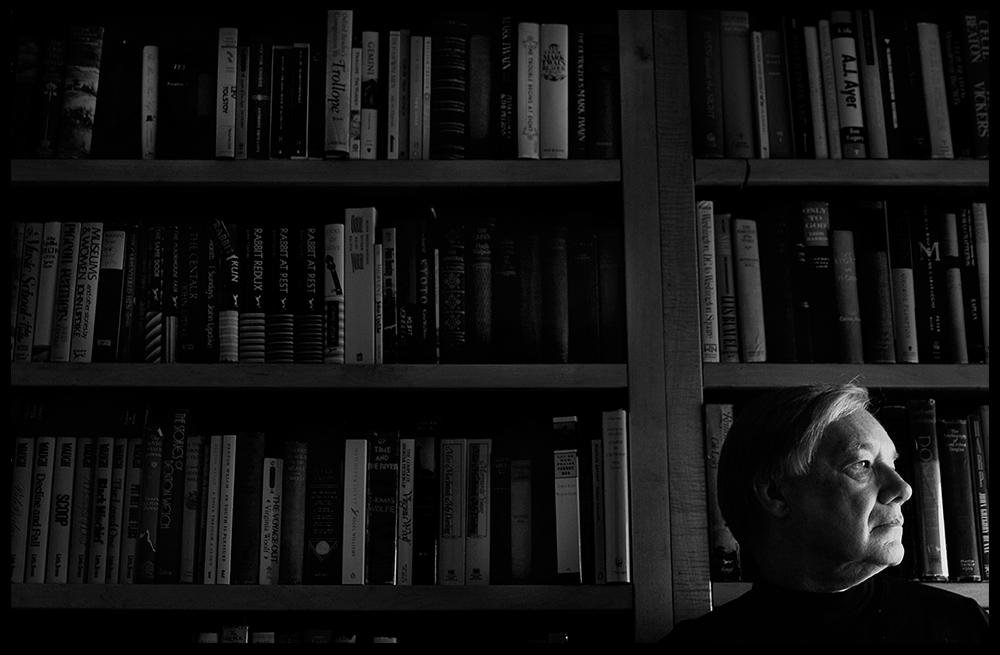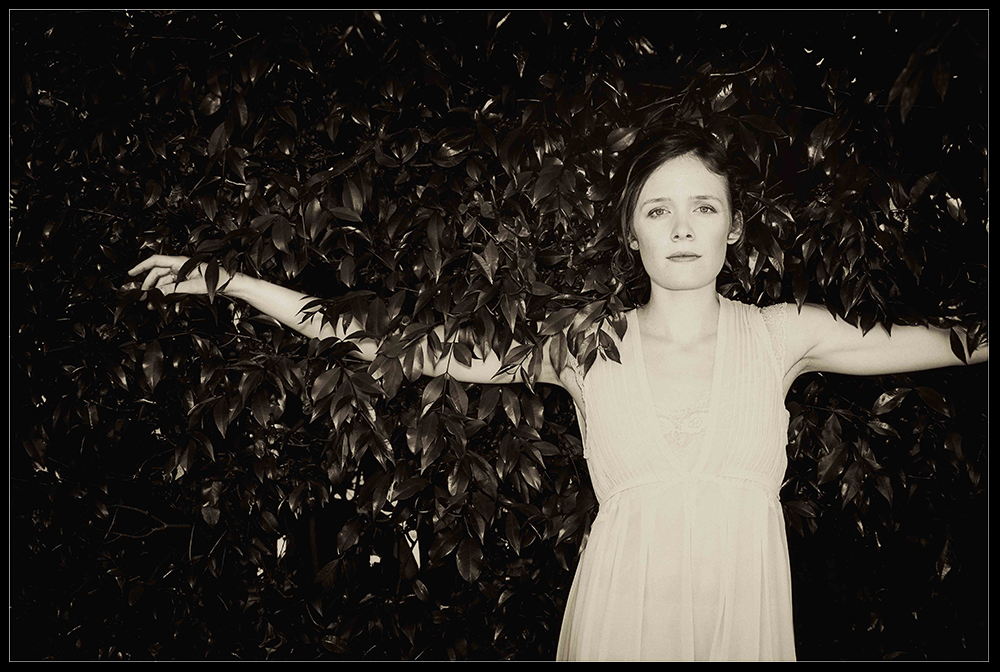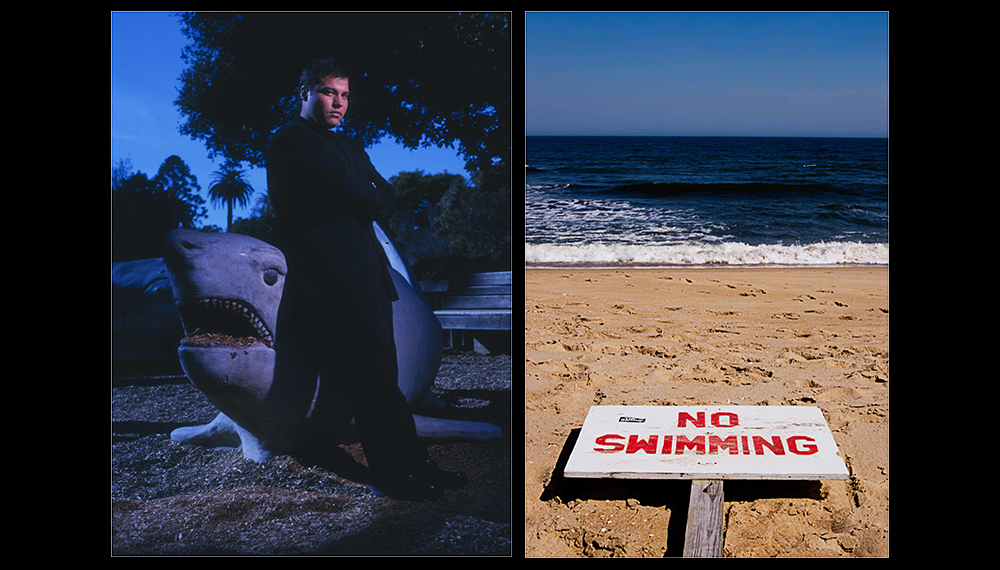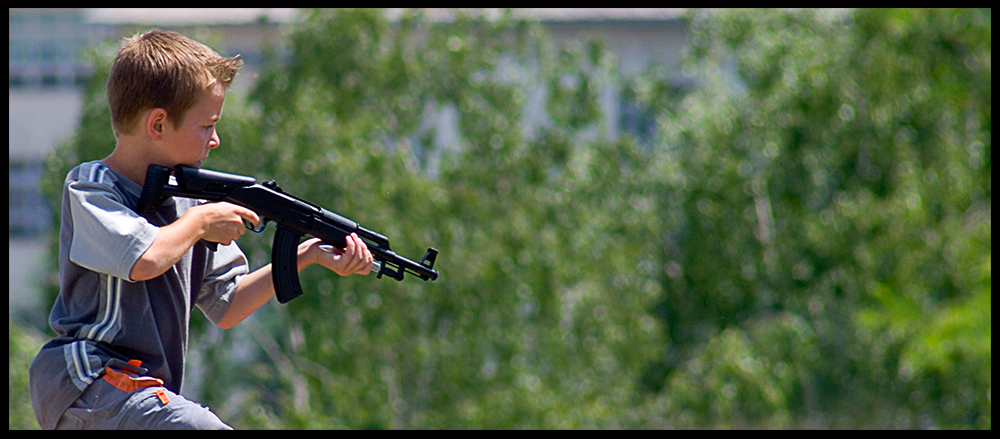
Photographers are visual people, it is safe to say we are among the most visual people there are. As a group we are the least likely to think about how words and language affect us. We are so focused, for lack of a better word, on visual communication it is easy for us to be blind to the non-visual. How many of us question the language we use while we create, and how it shapes what we create? It is vital to question it. Words are how we think, “Words are thoughts made real.” Change the way you think and you will change the way you shoot.
Portrait photographers
talk about “subject” and “background” and how you want your “subject separate from the background.” I have an issue with this, the issue is the word “background.” By its definition background is secondary, not important, it is an after thought. This gives the subject all the importance. But if we strive to be artists, then nothing is secondary in the frame, we are responsible for all of it. All of it deserves our thought and attention. So what is the better word to use? “Environment.” Do you see how asking yourself “What kind of environment do I want my subject in?” is a profoundly different question than, "What kind of background do I want?" The first question will help you create a story, and reveal something about your subject, you couldn't do otherwise. The second question will invariably be answered with “Black, White or Gray” or with whatever fabric background you happen to own. Is that how we want to create?

When we talk about the subject being “separate from the background” we are really talking about “visual separation” of the subject. It means the eye can clearly distinguish the subject from the rest of the frame, there are no confusing elements, like trees behind the model's head (unless you really want them there). It does not mean the subject is apart from their environment, it means we can visually tell the difference between the two. It is always a choice for you to make. For traditional portraiture, this visual separation is required, but it doesn’t preclude you from putting your subject in an interesting environment.
Portrait painters used to include symbolic objects in their paintings. These objects would reveal the inner life of their subjects. They would add maps or globes if they liked travel, or a skull if they were interested in philosophy. The elements of the painting had meaning, they told a story about their subject. They created an environment that showed personality. It is vastly more interesting then “This is how the subject looked.” How many painted portraits have you seen where the sitter was in front of a white seamless? Close to zero I suspect. Why do you think that is? It is because painters create environments for their subjects, even if they are simple. Photographers have different challenges than painters, but we can learn from their techniques and thinking.
I have a friend who is a great photographer, and an excellent teacher. I was in his class one day as he showed the audience his post processing. He was showing us how he crops, and used a photo with a lot of open sky, he referred to it as “Dead Space” and cropped it out. I cringed, and to my horror watched as he did this with multiple photos. Always talking about clearing away the “Dead Space” to make his photos stronger. If you look at cloudless sky as dead space, of course you are going to crop it out, and you will crop it out every time. But is a solid color really dead space? Or is it another element of composition you can use to communicate and balance your image with? It is up to you.

How you think about photography will guide how you create, and what you think is revealed through the words you use. The next time you talk to other photographers, listen to the words they use, and the ones you use to describe your work. Pay attention to what you say. Do you use any words that limit or control what you create? Is there a “Dead Space” floating around in your thoughts? Do your words describe who you are, or who you want to be as a photographer? When I was younger I thought it was funny to say things like, “I shoot People,” or even cool to say I was a “shooter” but those words don’t reflect who I am. I am more interested in creation than destruction, so I try not to use words associated with violence.

Do you really want to say you “shoot” people? Do you really “take” a picture, or do you “make” one? Are you recording or documenting, or are you expressing, exploring and revealing? Just like your images, your words will reveal and guide how you think and create, choose them wisely. Choose “environments” instead of “backgrounds,” have “guidelines” instead of “rules,” and keep yourself, your possibilities, and your skies “open.”
All images ©Thann Clark
 Photographers are visual people, it is safe to say we are among the most visual people there are. As a group we are the least likely to think about how words and language affect us. We are so focused, for lack of a better word, on visual communication it is easy for us to be blind to the non-visual. How many of us question the language we use while we create, and how it shapes what we create? It is vital to question it. Words are how we think, “Words are thoughts made real.” Change the way you think and you will change the way you shoot.
Portrait photographers talk about “subject” and “background” and how you want your “subject separate from the background.” I have an issue with this, the issue is the word “background.” By its definition background is secondary, not important, it is an after thought. This gives the subject all the importance. But if we strive to be artists, then nothing is secondary in the frame, we are responsible for all of it. All of it deserves our thought and attention. So what is the better word to use? “Environment.” Do you see how asking yourself “What kind of environment do I want my subject in?” is a profoundly different question than, "What kind of background do I want?" The first question will help you create a story, and reveal something about your subject, you couldn't do otherwise. The second question will invariably be answered with “Black, White or Gray” or with whatever fabric background you happen to own. Is that how we want to create?
Photographers are visual people, it is safe to say we are among the most visual people there are. As a group we are the least likely to think about how words and language affect us. We are so focused, for lack of a better word, on visual communication it is easy for us to be blind to the non-visual. How many of us question the language we use while we create, and how it shapes what we create? It is vital to question it. Words are how we think, “Words are thoughts made real.” Change the way you think and you will change the way you shoot.
Portrait photographers talk about “subject” and “background” and how you want your “subject separate from the background.” I have an issue with this, the issue is the word “background.” By its definition background is secondary, not important, it is an after thought. This gives the subject all the importance. But if we strive to be artists, then nothing is secondary in the frame, we are responsible for all of it. All of it deserves our thought and attention. So what is the better word to use? “Environment.” Do you see how asking yourself “What kind of environment do I want my subject in?” is a profoundly different question than, "What kind of background do I want?" The first question will help you create a story, and reveal something about your subject, you couldn't do otherwise. The second question will invariably be answered with “Black, White or Gray” or with whatever fabric background you happen to own. Is that how we want to create?
 When we talk about the subject being “separate from the background” we are really talking about “visual separation” of the subject. It means the eye can clearly distinguish the subject from the rest of the frame, there are no confusing elements, like trees behind the model's head (unless you really want them there). It does not mean the subject is apart from their environment, it means we can visually tell the difference between the two. It is always a choice for you to make. For traditional portraiture, this visual separation is required, but it doesn’t preclude you from putting your subject in an interesting environment.
Portrait painters used to include symbolic objects in their paintings. These objects would reveal the inner life of their subjects. They would add maps or globes if they liked travel, or a skull if they were interested in philosophy. The elements of the painting had meaning, they told a story about their subject. They created an environment that showed personality. It is vastly more interesting then “This is how the subject looked.” How many painted portraits have you seen where the sitter was in front of a white seamless? Close to zero I suspect. Why do you think that is? It is because painters create environments for their subjects, even if they are simple. Photographers have different challenges than painters, but we can learn from their techniques and thinking.
I have a friend who is a great photographer, and an excellent teacher. I was in his class one day as he showed the audience his post processing. He was showing us how he crops, and used a photo with a lot of open sky, he referred to it as “Dead Space” and cropped it out. I cringed, and to my horror watched as he did this with multiple photos. Always talking about clearing away the “Dead Space” to make his photos stronger. If you look at cloudless sky as dead space, of course you are going to crop it out, and you will crop it out every time. But is a solid color really dead space? Or is it another element of composition you can use to communicate and balance your image with? It is up to you.
When we talk about the subject being “separate from the background” we are really talking about “visual separation” of the subject. It means the eye can clearly distinguish the subject from the rest of the frame, there are no confusing elements, like trees behind the model's head (unless you really want them there). It does not mean the subject is apart from their environment, it means we can visually tell the difference between the two. It is always a choice for you to make. For traditional portraiture, this visual separation is required, but it doesn’t preclude you from putting your subject in an interesting environment.
Portrait painters used to include symbolic objects in their paintings. These objects would reveal the inner life of their subjects. They would add maps or globes if they liked travel, or a skull if they were interested in philosophy. The elements of the painting had meaning, they told a story about their subject. They created an environment that showed personality. It is vastly more interesting then “This is how the subject looked.” How many painted portraits have you seen where the sitter was in front of a white seamless? Close to zero I suspect. Why do you think that is? It is because painters create environments for their subjects, even if they are simple. Photographers have different challenges than painters, but we can learn from their techniques and thinking.
I have a friend who is a great photographer, and an excellent teacher. I was in his class one day as he showed the audience his post processing. He was showing us how he crops, and used a photo with a lot of open sky, he referred to it as “Dead Space” and cropped it out. I cringed, and to my horror watched as he did this with multiple photos. Always talking about clearing away the “Dead Space” to make his photos stronger. If you look at cloudless sky as dead space, of course you are going to crop it out, and you will crop it out every time. But is a solid color really dead space? Or is it another element of composition you can use to communicate and balance your image with? It is up to you.
 How you think about photography will guide how you create, and what you think is revealed through the words you use. The next time you talk to other photographers, listen to the words they use, and the ones you use to describe your work. Pay attention to what you say. Do you use any words that limit or control what you create? Is there a “Dead Space” floating around in your thoughts? Do your words describe who you are, or who you want to be as a photographer? When I was younger I thought it was funny to say things like, “I shoot People,” or even cool to say I was a “shooter” but those words don’t reflect who I am. I am more interested in creation than destruction, so I try not to use words associated with violence.
How you think about photography will guide how you create, and what you think is revealed through the words you use. The next time you talk to other photographers, listen to the words they use, and the ones you use to describe your work. Pay attention to what you say. Do you use any words that limit or control what you create? Is there a “Dead Space” floating around in your thoughts? Do your words describe who you are, or who you want to be as a photographer? When I was younger I thought it was funny to say things like, “I shoot People,” or even cool to say I was a “shooter” but those words don’t reflect who I am. I am more interested in creation than destruction, so I try not to use words associated with violence.
 Do you really want to say you “shoot” people? Do you really “take” a picture, or do you “make” one? Are you recording or documenting, or are you expressing, exploring and revealing? Just like your images, your words will reveal and guide how you think and create, choose them wisely. Choose “environments” instead of “backgrounds,” have “guidelines” instead of “rules,” and keep yourself, your possibilities, and your skies “open.”
All images ©Thann Clark
Do you really want to say you “shoot” people? Do you really “take” a picture, or do you “make” one? Are you recording or documenting, or are you expressing, exploring and revealing? Just like your images, your words will reveal and guide how you think and create, choose them wisely. Choose “environments” instead of “backgrounds,” have “guidelines” instead of “rules,” and keep yourself, your possibilities, and your skies “open.”
All images ©Thann Clark





